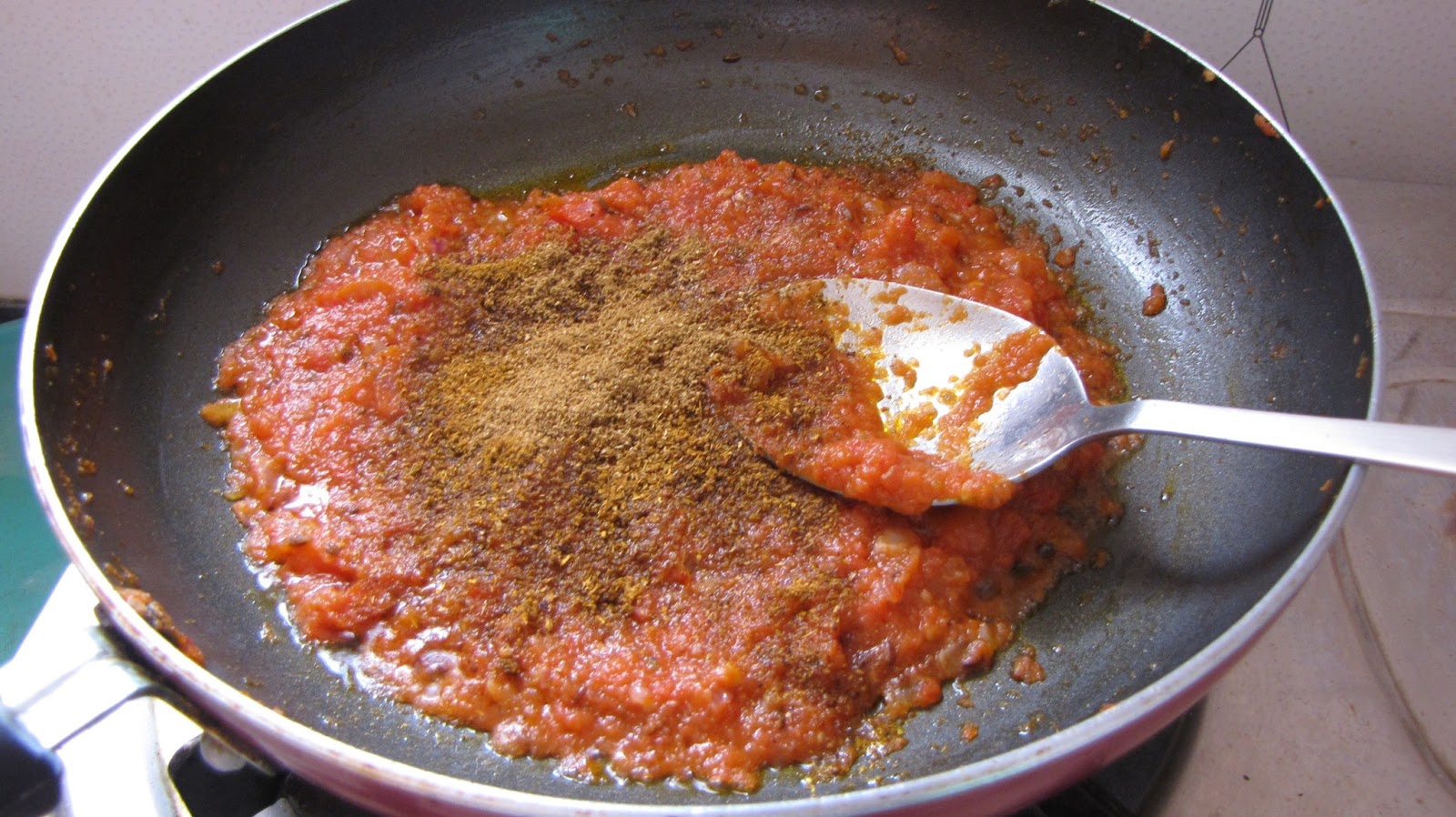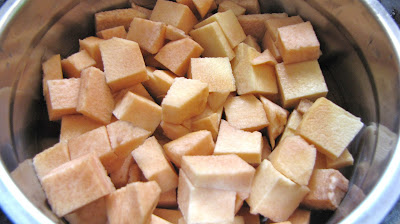I had
bought some tur-beans (fresh tur dal) l from Bangalore when I visited my sister
last time. I peeled them and froze them but forgot it for a couple of months;
yesterday I tried this simple gravy to pack for lunch along with phulkas. I prepared
pulpy gravy that suited the beans very well. He said it tasted like green peas
subji; maybe we can try some more green peas-recipes with this beans.
Serves: 2
Preparation Time: 10 min
Cooking Time: 15 min
Ingredients:
1.
Fresh peeled tur dal – 1 ½ cups
2.
Tomato – 3
3.
Onion – 2
4.
Green chili – 1
5.
Ginger – 1“ piece
6.
Garlic – 3 cloves
7.
Oil – 1 tbsp
8.
Cumin seeds – ½ tsp
9.
Red chili powder – 1 tsp
10.Garam masala – ½ tsp
11. Coriander
powder – ½ tsp
12. Salt to taste
Method:
Step 1:
Chop one onion and one tomato; grind together two tomatoes, one onion, green
chili, ginger & garlic into a fine paste.
Step 2:
Heat oil in a pan, splutter cumin seeds and sauté chopped onion and then tomato until soft.
Step 3: Add and sauté the ground paste in it until
the oil separates.
Step 4:
Put the dry masala powders and fry for a minute; pour two cups of water and let it
come to a boil.
Step 5:
Add the tur dal, enough salt and mix well; cook covered in simmer for 5
minutes.
Step 6:
Open the lid, check if dal is cooked, adjust salt and spices and cook it open
for 2 minutes and then turn of stove.
Step 7:
Serve garnished with coriander or fresh cream to accompany phulkas or rice.















